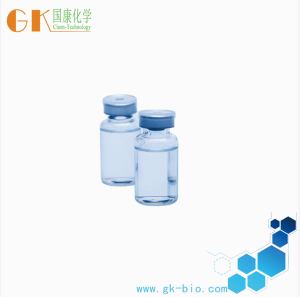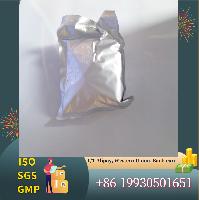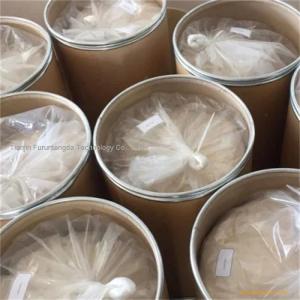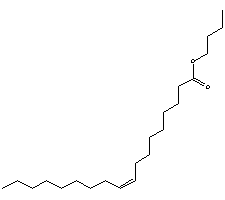Butyl oleate (CAS 142-77-8) is a chemical compound that belongs to the ester class. It is a clear, colorless liquid with a fruity odor. The basic structure of butyl oleate consists of a butyl group attached to the ester functional group, which is formed by the reaction between butanol and oleic acid. This chemical is soluble in organic solvents such as ethanol and ether, but it is insoluble in water.
Butyl oleate has several physical properties. It has a molecular weight of 284.47 grams per mole and a boiling point of approximately 240 degrees Celsius. Its density is around 0.88 grams per milliliter, and it has a refractive index of 1.448. This compound is stable under normal conditions and does not undergo any significant decomposition or reaction.
Chemically, butyl oleate is known for its ability to undergo esterification reactions. It can react with various acids and alcohols to form different esters. This compound is also susceptible to oxidation, which can lead to the formation of degradation products. However, under proper storage conditions, such as in the absence of air and light, the risk of oxidation can be minimized.
Applicable Fields
Butyl oleate finds applications in various industries due to its unique properties. Some of its main uses include:
1. Cosmetics: Butyl oleate is commonly used in the formulation of cosmetics and personal care products. It acts as an emollient, providing moisturizing and softening effects on the skin and hair.
2. Lubricants: This chemical is also utilized as a lubricant in different industrial applications. It helps reduce friction and wear between moving parts, improving the efficiency and lifespan of machinery.
3. Surfactants: Butyl oleate can function as a surfactant, which means it can lower the surface tension between two substances. This property makes it useful in the production of detergents, emulsifiers, and foaming agents.
Mechanism of Action
The mechanism of action of butyl oleate varies depending on its application:
1. In cosmetics, butyl oleate forms a thin film on the skin or hair, preventing moisture loss and providing a smooth and soft texture.
2. As a lubricant, it forms a protective layer between moving parts, reducing friction and preventing wear and tear.
3. In surfactant applications, butyl oleate helps to reduce the surface tension between different substances, allowing them to mix more easily and form stable emulsions or foams.
Storage Conditions
Store in a cool, dry place.




















